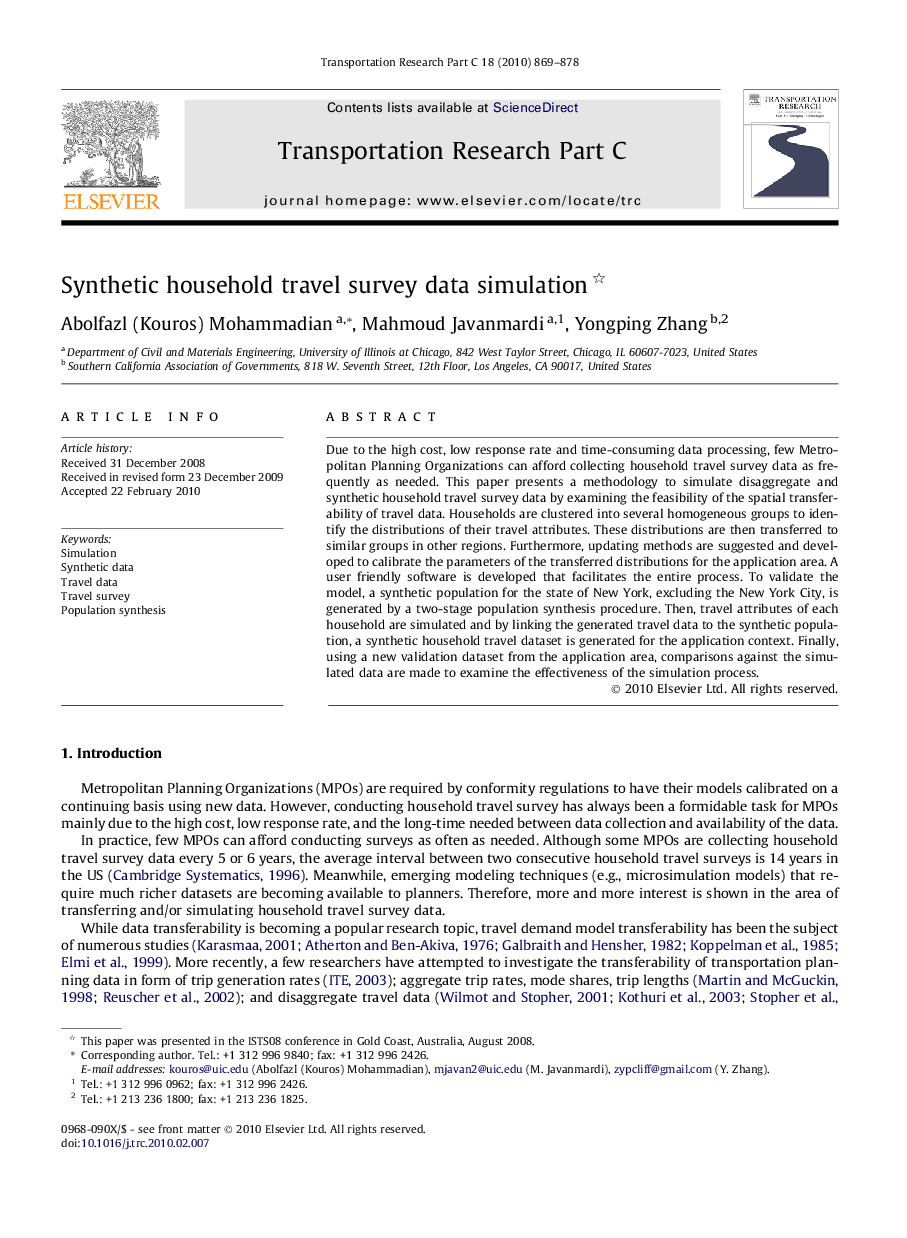| Article ID | Journal | Published Year | Pages | File Type |
|---|---|---|---|---|
| 525134 | Transportation Research Part C: Emerging Technologies | 2010 | 10 Pages |
Due to the high cost, low response rate and time-consuming data processing, few Metropolitan Planning Organizations can afford collecting household travel survey data as frequently as needed. This paper presents a methodology to simulate disaggregate and synthetic household travel survey data by examining the feasibility of the spatial transferability of travel data. Households are clustered into several homogeneous groups to identify the distributions of their travel attributes. These distributions are then transferred to similar groups in other regions. Furthermore, updating methods are suggested and developed to calibrate the parameters of the transferred distributions for the application area. A user friendly software is developed that facilitates the entire process. To validate the model, a synthetic population for the state of New York, excluding the New York City, is generated by a two-stage population synthesis procedure. Then, travel attributes of each household are simulated and by linking the generated travel data to the synthetic population, a synthetic household travel dataset is generated for the application context. Finally, using a new validation dataset from the application area, comparisons against the simulated data are made to examine the effectiveness of the simulation process.
